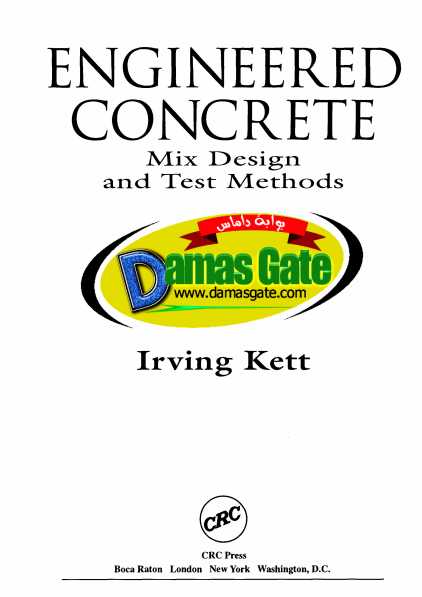Engineered Concrete - Mix Design and Test Methods

INTRODUCTION
The purpose of this book is to familiarize civil engineering and technology students with two of
the most important materials of construction, portland cement (PC) and portland cement concrete
(PCC). People frequently make the mistake of using these terms interchangeably. The book aims
to assist students in gaining an understanding of PC and PCC through the physical handling and
testing of these materials in the laboratory environment. While the book was primarily written for
use at the college level, it also may serve as a practical guide for the graduate engineer and laboratory
technician.
The body of this book is divided into several sections. The first explains how concrete batches
are designed, mixed, and measured for various consistencies in a special section entitled
Mix Design Procedures. Section II details the tests of the primary component materials of concrete other than
water, namely portland cement, aggregates, and mortar. Section III includes some of the fundamental
concrete testing procedures for different strength parameters in conformity with the standards of
the American Society for Testing Materials (ASTM). There probably will never be enough laboratory
time to complete all of the test procedures, even in a 15-week semester.
The testing procedures included herein are intended to accurately reflect the specific ASTM
designations, sometimes with modifications dictated by the inherent time constraints of a school
laboratory. Therefore, in certain cases, such as in securing the specific gravities and absorption of
aggregates, modifications were introduced to fit the usual 3-hour laboratory module. Where the
particular ASTM method permits alternate procedures, only the one deemed more applicable to the
teaching situation was chosen.
Download
http://s18.alxa.net/s18/srvs2/02/002...st.Methods.rar